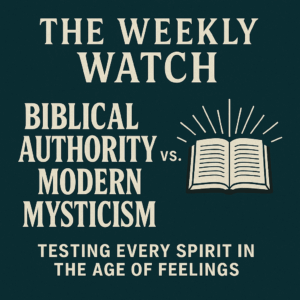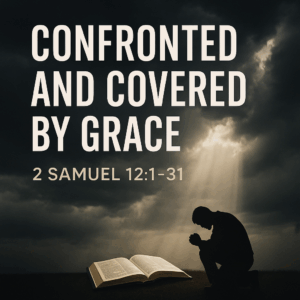⏱️ Estimated Reading Time: 3 min read
Hebrews 9:1–5, “Now even the first covenant had regulations for worship and an earthly place of holiness. 2 For a tent was prepared, the first section, in which were the lampstand and the table and the bread of the Presence. It is called the Holy Place. 3 Behind the second curtain was a second section called the Most Holy Place, 4 having the golden altar of incense and the ark of the covenant covered on all sides with gold, in which was a golden urn holding the manna, and Aaron’s staff that budded, and the tablets of the covenant. 5 Above it were the cherubim of glory overshadowing the mercy seat. Of these things we cannot now speak in detail.”
The apostle Paul tells us that all of the promises of God find their yes and Amen in Christ (2 Cor. 1:20). Our study of the biblical covenants concluded last week by briefly noting how Christ is the fulfillment of all that came before His incarnation. In Christ, the new covenant fulfills and supersedes the covenants God made previously with Adam, Noah, Abraham, Moses, and David.
The new covenant in Christ is superior to the old covenant because in the new covenant, redemption has been accomplished, not just promised. The Son of God has become incarnate and has done all that is necessary to secure our salvation. The author of Hebrews tells us that it is Christ’s divine nature and willingness to suffer that makes Him superior to angels and to Moses, both key figures of the old covenant (Heb. 1–3:6).
It is Jesus Christ who will lead us into our final Sabbath rest (3:7–4:13), because His priesthood after the order of Melchizedek enables Him to save us to the uttermost (4:14–7:28). He is the guarantor of a better covenant whose benefits, having been revealed and guaranteed by Christ Jesus (Heb. 8), are now being applied to His elect in anticipation of the renewal of all things.
In our studies this month, we will concentrate on Hebrews chapter 9. In chapter 8, we have seen how the author of Hebrews emphasized the fact that the faults of the old covenant necessitated the making of a new covenant. Now we will see in chapters 9 and 10 how he explains one of these “faults” in greater detail by describing the weaknesses of old covenant sacrifices.
Setting this up, the author begins chapter 9 by giving a description of the tabernacle where the lesser sacrifices of the old covenant were made. In today’s passage, he gives a brief description of a few artifacts found in the old covenant temple including the lampstand, the showbread, the altar of incense, and the ark of the covenant.
At the end of verse 5, the author abruptly stops his teaching by saying, “of these things we cannot now speak in detail.” It appears that he stops his discourse on the earthly tabernacle because he is concerned about emphasizing the superiority of Jesus Christ who has replaced the tabernacle by “tabernacling” among us (John 1:14).
Coram Deo
Although it is not emphasized here, the Bible makes it clear that Jesus is the true Temple of God. Just as God dwelt with His people in the temple under the old covenant, He has dwelt among us in the person of the incarnate Son of God. We are the body of Christ, and we can rejoice that God the Holy Spirit dwells among us today.
Regulations for Worship, Copyright (2020), Ligonier Ministries.



